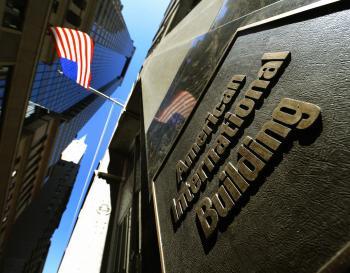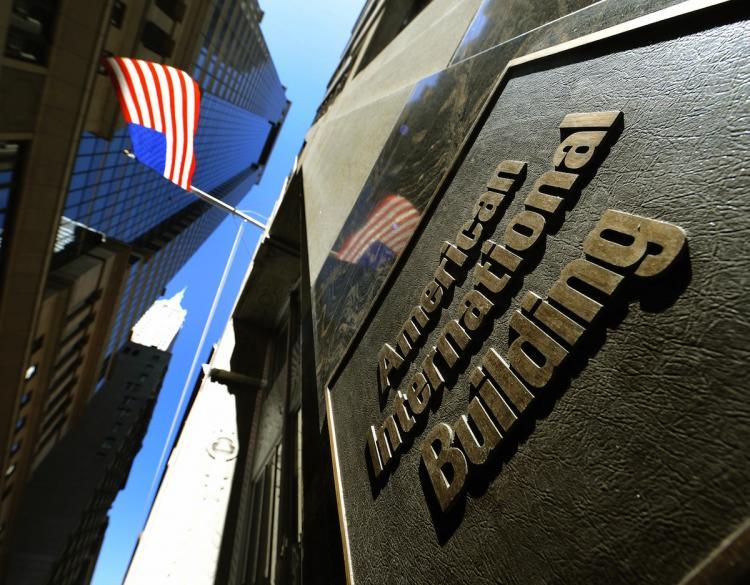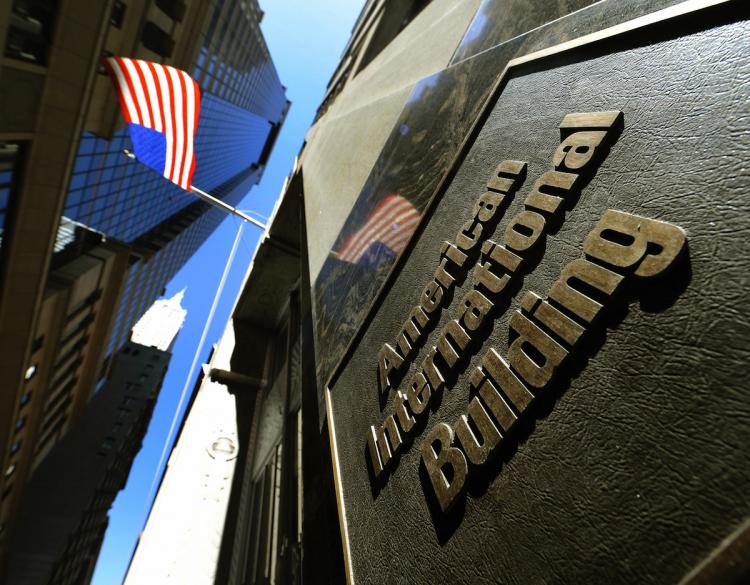Federal government officials have insisted time and again that U.S. taxpayers will be paid back in full for the Treasury Department and Federal Reserve Bank of New York’s bailout injection into insurance giant American International Group Inc. (AIG).
But recent reports and analyses by experts suggest that the picture may not be as rosy as previously thought.
The U.S. government “when it fails to negotiate robustly on behalf of the taxpayer, as it did when agreeing to compensate American International Group, Inc.’s (“AIG”) counterparties 100 cents on the dollar for securities worth less than half that amount, the Government invites public anger, hostility, and mistrust,” according to the Office of the Special Inspector General for the Troubled Asset Relief Program (SIGTARP) Quarterly Report to Congress, published at the end of October.
The report states that retreating from a strong negotiating position, the U.S. government has lost credibility and it has long-term dire results. “And by doing so, it [the U.S. government] dangerously undermines its ability to respond effectively to the next crisis.”
Experts suggest that the bailout could spur institutions to become too big to fail, creating a new layer of government-owned entities that don’t have to abide by competitive market forces and can take unprecedented risks with little fear to be called to task.
Misleading Computations?
The Treasury Department announced that its investments in AIG and the banks would earn the American taxpayer a profit, while losses would be restricted to the housing and automobile industries.
“The recently announced restructuring of AIG will accelerate the government’s exit on terms that are likely to lead to an overall profit on the government’s support for AIG, including the value of Treasury’s interests in AIG held outside of TARP,” announced the Department of the Treasury in its October TARP “Two Year Retrospective” report.
The AIG bailout will still cost the American taxpayer about $5 billion, which will be offset by a $22 billion gain when the Treasury Department sells the equity investments it owns in the company.
The $5 billion cost is a significant reduction of the $45 billion in losses the department estimated around the beginning of 2010. These math adjustments need to be explained in greater detail, as the sale of the government’s ownership in AIG depends on market forces, that is, what investors are willing to shell out to buy AIG stock.
The Treasury’s “calculation does not account for the volatility in AIG’s stock price, which may result in losses or gains that are either greater or less than the projected amounts,” detailed the SIGTARP report.
In short, the SIGTARP report accused the Treasury Department of manipulating numbers by changing accounting practices to align its predictions more to AIG’s improved conditions. In prior reports, the department accounted for the losses through a complicated set of calculations, while in the latest announcement, it dropped the calculations in favor of subjective market forecasts.
The SIGTARP said that the Treasury did not mention in its report that it changed its methodology significantly, and that it could not draw on the new methodology in its 2010 fiscal year-end TARP financial reports. Treasury violated the transparency rule in obscuring its manipulation of accounting methodologies.
Continued to next page...
“This conduct has left Treasury vulnerable to charges that it has manipulated its methodology for calculating losses,” according to the SIGTARP report.
The Treasury Department, in response to a letter from the SIGTARP asking for more transparency, rejected any accusation of changing its stock valuation methodology.
It should be understood that the Treasury Department presently holds preferred stock in AIG, which are rather difficult to value. Preferred stock will give the holder priority to dividends and capital during liquidation, but the owners have no voting rights and such stock cannot be sold until converted into common stock. Therefore, Treasury used predicted future stock prices for its calculation.
Questions Surrounding AIG
Despite market skepticism, AIG announced that it is on its way to becoming self-sufficient. It wants to leave its government ties behind and said that its plan has been given a green light by the Federal Reserve Bank of New York (FRBNY), the U.S. Treasury, and the trustees of the AIG Credit Facility Trust.
“We are very pleased that this agreement vastly simplifies current government support of AIG, sets forth a clear path for AIG to repay the FRBNY in full, and sets in motion the steps for the U.S. Treasury to exit its ownership of AIG over time,” said Robert H. Benmosche, CEO and president at AIG, in a statement.
AIG’s obligation to the U.S. government totaled $101.2 billion at June 2010, according to the AIG website. A total of $35.5 billion was not utilized, which if drawn down would make the total obligation balloon to $136.7 billion. Of the total used, $74.7 billion are in preferred stock, and $26.5 is borrowed under the TARP program.
Charges that those companies responsible for the economic crisis are hiding behind their corporate smoke screens are heard more frequently. There is a strong sense among experts that those who benefited have been left with the impression that any future crisis will be handled similarly, and they could continue with their risk taking in the chase for high rewards in the form of bonuses.
“It is ironic that although the bailout of AIG may have also rescued many of its counterparties, none of these institutions were willing to share the pain of the bailout with the taxpayers. ... Instead, they left the American taxpayers with the full burden of the bailout,” said J. Mark McWatters, attorney and certified accountant in a publication on the Congressional Oversight Panel website.
The public does not agree that AIG should be left to its own devices in its present form. Many experts say that AIG has become too large, and calls for dismantling AIG are getting louder, according to a number of public forums, think tanks, and other discussions.
“The American International Group has announced a plan to exit from bankruptcy. It’s a bad idea. Rather than allowing AIG to continue as a mostly intact entity—as its management wants to do—government agencies that have helped to bail out AIG should instead sell it off in pieces,” according to an article on FrumForum, a conservative bloggers website.
But recent reports and analyses by experts suggest that the picture may not be as rosy as previously thought.
The U.S. government “when it fails to negotiate robustly on behalf of the taxpayer, as it did when agreeing to compensate American International Group, Inc.’s (“AIG”) counterparties 100 cents on the dollar for securities worth less than half that amount, the Government invites public anger, hostility, and mistrust,” according to the Office of the Special Inspector General for the Troubled Asset Relief Program (SIGTARP) Quarterly Report to Congress, published at the end of October.
The report states that retreating from a strong negotiating position, the U.S. government has lost credibility and it has long-term dire results. “And by doing so, it [the U.S. government] dangerously undermines its ability to respond effectively to the next crisis.”
Experts suggest that the bailout could spur institutions to become too big to fail, creating a new layer of government-owned entities that don’t have to abide by competitive market forces and can take unprecedented risks with little fear to be called to task.
Misleading Computations?
The Treasury Department announced that its investments in AIG and the banks would earn the American taxpayer a profit, while losses would be restricted to the housing and automobile industries.
“The recently announced restructuring of AIG will accelerate the government’s exit on terms that are likely to lead to an overall profit on the government’s support for AIG, including the value of Treasury’s interests in AIG held outside of TARP,” announced the Department of the Treasury in its October TARP “Two Year Retrospective” report.
The AIG bailout will still cost the American taxpayer about $5 billion, which will be offset by a $22 billion gain when the Treasury Department sells the equity investments it owns in the company.
The $5 billion cost is a significant reduction of the $45 billion in losses the department estimated around the beginning of 2010. These math adjustments need to be explained in greater detail, as the sale of the government’s ownership in AIG depends on market forces, that is, what investors are willing to shell out to buy AIG stock.
The Treasury’s “calculation does not account for the volatility in AIG’s stock price, which may result in losses or gains that are either greater or less than the projected amounts,” detailed the SIGTARP report.
In short, the SIGTARP report accused the Treasury Department of manipulating numbers by changing accounting practices to align its predictions more to AIG’s improved conditions. In prior reports, the department accounted for the losses through a complicated set of calculations, while in the latest announcement, it dropped the calculations in favor of subjective market forecasts.
The SIGTARP said that the Treasury did not mention in its report that it changed its methodology significantly, and that it could not draw on the new methodology in its 2010 fiscal year-end TARP financial reports. Treasury violated the transparency rule in obscuring its manipulation of accounting methodologies.
Continued to next page...
“This conduct has left Treasury vulnerable to charges that it has manipulated its methodology for calculating losses,” according to the SIGTARP report.
The Treasury Department, in response to a letter from the SIGTARP asking for more transparency, rejected any accusation of changing its stock valuation methodology.
It should be understood that the Treasury Department presently holds preferred stock in AIG, which are rather difficult to value. Preferred stock will give the holder priority to dividends and capital during liquidation, but the owners have no voting rights and such stock cannot be sold until converted into common stock. Therefore, Treasury used predicted future stock prices for its calculation.
Questions Surrounding AIG
Despite market skepticism, AIG announced that it is on its way to becoming self-sufficient. It wants to leave its government ties behind and said that its plan has been given a green light by the Federal Reserve Bank of New York (FRBNY), the U.S. Treasury, and the trustees of the AIG Credit Facility Trust.
“We are very pleased that this agreement vastly simplifies current government support of AIG, sets forth a clear path for AIG to repay the FRBNY in full, and sets in motion the steps for the U.S. Treasury to exit its ownership of AIG over time,” said Robert H. Benmosche, CEO and president at AIG, in a statement.
AIG’s obligation to the U.S. government totaled $101.2 billion at June 2010, according to the AIG website. A total of $35.5 billion was not utilized, which if drawn down would make the total obligation balloon to $136.7 billion. Of the total used, $74.7 billion are in preferred stock, and $26.5 is borrowed under the TARP program.
Charges that those companies responsible for the economic crisis are hiding behind their corporate smoke screens are heard more frequently. There is a strong sense among experts that those who benefited have been left with the impression that any future crisis will be handled similarly, and they could continue with their risk taking in the chase for high rewards in the form of bonuses.
“It is ironic that although the bailout of AIG may have also rescued many of its counterparties, none of these institutions were willing to share the pain of the bailout with the taxpayers. ... Instead, they left the American taxpayers with the full burden of the bailout,” said J. Mark McWatters, attorney and certified accountant in a publication on the Congressional Oversight Panel website.
The public does not agree that AIG should be left to its own devices in its present form. Many experts say that AIG has become too large, and calls for dismantling AIG are getting louder, according to a number of public forums, think tanks, and other discussions.
“The American International Group has announced a plan to exit from bankruptcy. It’s a bad idea. Rather than allowing AIG to continue as a mostly intact entity—as its management wants to do—government agencies that have helped to bail out AIG should instead sell it off in pieces,” according to an article on FrumForum, a conservative bloggers website.







Friends Read Free